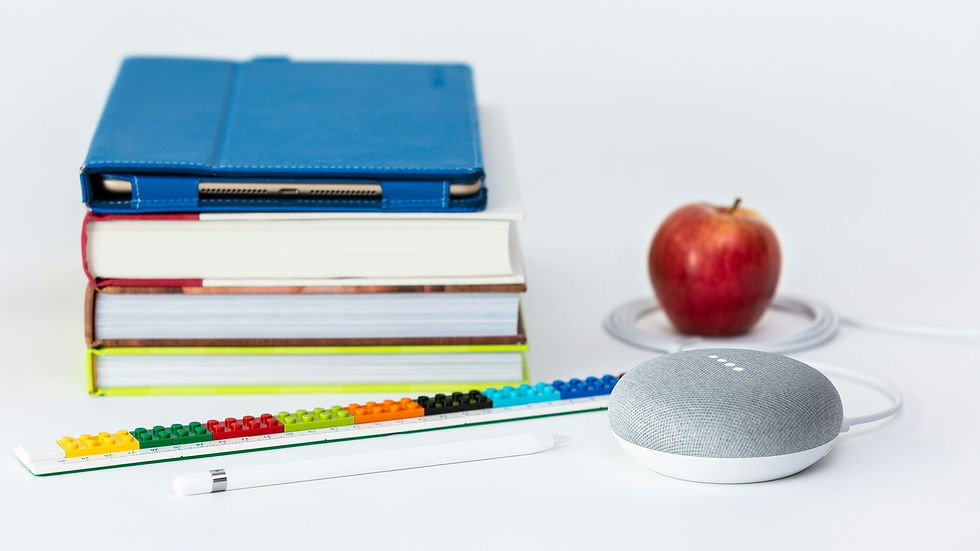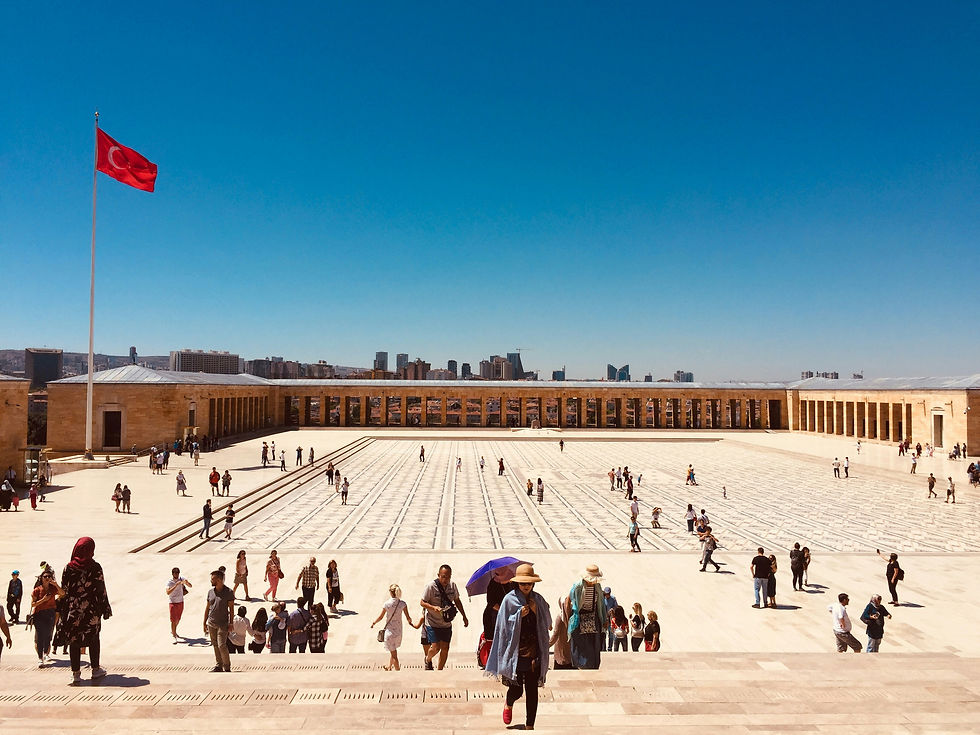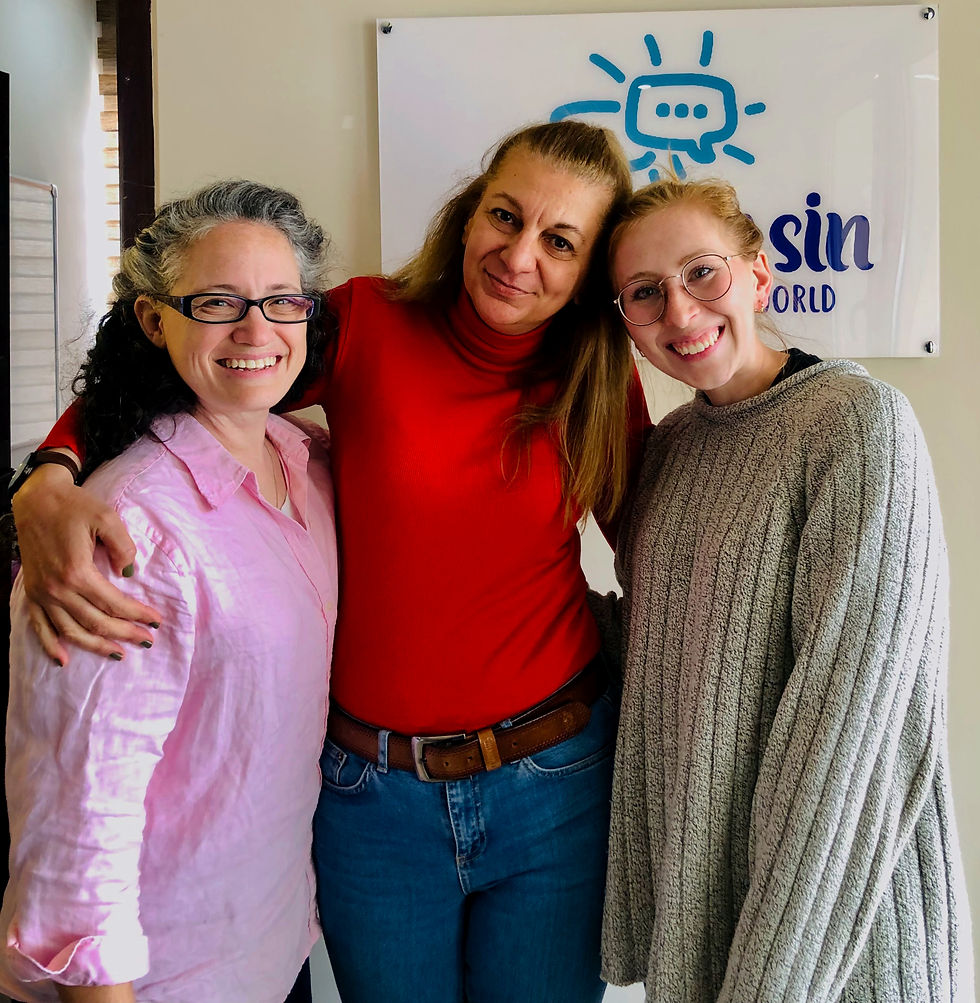Learn Turkish Language with the GPA Method
- Kolay Gelsin
- Jul 26, 2024
- 6 min read
Updated: Jul 9

Learning a new language can be a challenging but incredibly great at the same time. Turkish might be hard for some people but it is really easy to learn with Growing Participator Approach (GPA). In this blog post, we'll explore how you can learn Turkish using the GPA method, offering practical steps and tips to enhance your learning journey. Whether you're a beginner or have some prior experience, this guide will help you navigate the path to fluency in Turkish.
What is the Growing Participator Approach (GPA)?
The Growing Participator Approach (GPA) is a language learning method developed by Greg Thomson. Unlike traditional language learning approaches that focus primarily on classroom instruction and textbooks, GPA emphasizes immersion and interaction within the target language community. The idea is to become a "growing participator" in the culture and community of the language you are learning, much like a child acquires their first language.
How To Learn Turkish with GPA Method?

GPA is structured around six phases, each designed to gradually increase your proficiency and comfort in the language. These phases include:
Phase 1: Here-and-Now
Phase 2: Story-Building
Phase 3: Shared-Story
Phase 4: Deep Life Sharing
Phase 5: Native-to-Native Discourses
Phase 6: Self-Sustaining Growth
Let's delve into each phase and see how you can apply them to learn Turkish effectively.

Phase 1: Here-and-Now
The first phase of GPA focuses on the "here-and-now" context. The goal is to immerse yourself in the language and culture in a very immediate and practical way.
Key Activities
Picture Activities: Use picture cards or objects to learn basic vocabulary related to everyday items. For instance, you can learn the names of household items, foods, and common verbs.
Simple Commands: Practice following simple commands in Turkish. For example, a language helper might say "otur" (sit) or "kalk" (stand up), and you perform the action.
Pointing and Naming: Work with a language partner to point at objects and say their names in Turkish. This helps reinforce your vocabulary and pronunciation.
Practical Tips:
Find a Language Helper: Partner with a native Turkish speaker who can guide you through this phase. They can help you with pronunciation and provide context for the words and phrases you learn.
Use Visual Aids: Leverage picture books, flashcards, and real-life objects to create a rich visual context for learning.
Repeat and Reinforce: Consistently practice new words and phrases to reinforce your memory and understanding.
Phase 2: Story-Building
In the second phase, you move from simple vocabulary and commands to creating and understanding basic stories. This phase helps you start thinking in Turkish and understanding more complex language structures.
Key Activities:
Picture Stories: Use a series of pictures to build simple narratives. Describe what is happening in each picture using complete sentences.
Role-Playing: Engage in role-playing activities with your language helper. This can include everyday scenarios like shopping, dining out, or visiting a friend.
Listening and Retelling: Listen to short stories in Turkish and then try to retell them in your own words. This helps with comprehension and active use of the language.
Practical Tips:
Start Simple: Begin with very simple stories and gradually increase the complexity as you become more comfortable.
Use Everyday Scenarios: Focus on stories and role-playing activities that reflect everyday life. This makes the language more relevant and useful.
Ask for Feedback: Have your language helper provide feedback on your retellings to improve accuracy and fluency.
Phase 3: Shared-Story

The third phase is about deepening your engagement with the language through shared stories. At this stage, you will be able to understand and participate in more complex conversations and narratives.
Key Activities:
Reading Together: Read short stories or simple books with your language helper. Discuss the content and ask questions to deepen your understanding.
Creating Stories: Work with your language helper to create your own stories in Turkish. This could be written or oral.
Cultural Stories: Learn about Turkish culture and traditions through stories. This not only improves your language skills but also enhances your cultural understanding.
Practical Tips:
Choose Interesting Topics: Select stories and topics that interest you. This keeps you motivated and engaged.
Practice Regularly: Consistent practice is key to retaining new vocabulary and structures.
Engage with the Culture: Take the opportunity to learn about Turkish customs, traditions, and history through stories.
Phase 4: Deep Life Sharing

Phase 4 involves sharing deeper aspects of life and personal experiences. This phase helps you become more comfortable with nuanced language and expressing more complex ideas.
Key Activities:
Personal Narratives: Share personal stories and experiences with your language helper. Discuss your daily life, hobbies, and aspirations in Turkish.
Debates and Discussions: Engage in discussions and debates on various topics. This helps you practice expressing opinions and reasoning in Turkish.
Cultural Exchanges: Learn about your language helper’s life and culture. Share aspects of your own culture and experiences in return.
Practical Tips:
Be Open and Honest: Sharing personal stories requires openness. This helps build a deeper connection with your language helper and makes conversations more meaningful.
Practice Active Listening: Pay close attention to your language helper’s stories and responses. This improves your listening skills and helps you learn new expressions.
Use a Journal: Keep a journal in Turkish where you write about your daily experiences and reflections.
Phase 5: Native-to-Native Discourses

In this phase, you aim to understand and participate in conversations as they occur naturally between native speakers. This requires a higher level of fluency and comprehension.
Key Activities:
Listening to Native Conversations: Listen to recordings or live conversations between native Turkish speakers. This could be in various contexts, such as social gatherings, work settings, or media.
Participating in Group Discussions: Join group discussions or community events where Turkish is spoken. This helps you adapt to different speakers and accents.
Analyzing Discourse: Analyze the structure and flow of native conversations. Note how speakers introduce topics, transition between ideas, and use idiomatic expressions.
Practical Tips:
Immerse Yourself Fully: Spend as much time as possible in environments where Turkish is spoken naturally.
Record and Review: Record conversations (with permission) and review them to identify areas for improvement.
Seek Feedback: Ask native speakers for feedback on your participation and understanding in conversations.
Phase 6: Self-Sustaining Growth
The final phase focuses on achieving a level of fluency where you can continue learning and improving on your own. This involves self-directed learning and finding ways to immerse yourself in the language continuously.
Key Activities:
Consuming Media: Watch Turkish movies, TV shows, and news. Listen to Turkish music and podcasts. Read books, newspapers, and blogs in Turkish.
Engaging in Hobbies: Pursue hobbies and interests in Turkish. Join clubs, take classes, or participate in online communities related to your interests.
Travel and Immersion: If possible, travel to Turkey and immerse yourself in the culture and language. This provides an unparalleled opportunity to practice and improve.
Practical Tips:
Stay Curious: Keep exploring new topics and expanding your vocabulary. The more you learn, the more interesting the language becomes.
Practice Regularly: Consistent practice is essential to maintain and improve your skills.
Set Goals: Set specific language learning goals and track your progress. This keeps you motivated and focused.
Cultural Learning

Incorporating cultural learning into the GPA Method helps you understand Turkish better by connecting with its culture. Learning about Turkish traditions, history, and daily life makes the language come alive. You can explore Turkish books, music, and movies to see how the language fits into the culture. Taking part in local festivals or trying traditional foods can also make learning more fun and interesting. By combining cultural experiences with your language studies, you’ll not only get better at speaking Turkish but also enjoy the learning process more and connect with the language on a deeper level.
How to Study with the Growing Participator Approach (GPA) for Effective Language Learning
To study effectively using the Growing Participator Approach (GPA), focus primarily on understanding before speaking. Each GPA session should include audio recordings to reinforce language learning. After every session, you'll have two recordings: one with the story you worked on and another with new vocabulary and examples in context. Spend at least 20 minutes daily listening to these recordings, reviewing new words, and writing additional examples using them.
Practicing your language skills is crucial. Engage with people around you to apply what you've learned. Additionally, listen to Turkish audio or watch videos that match your current comprehension level. It's important to choose materials where you understand at least 65% of the content. This "growth zone" will effectively promote language learning, unlike materials with only 10% comprehension, which won't be as beneficial.
By following these GPA methods, you can enhance your language skills efficiently and effectively.
Learning Turkish with the Growing Participator Approach is a journey that involves immersion, interaction, and gradual progression through different phases of language acquisition. By following the GPA method, you can build a strong foundation in Turkish and become a confident and proficient speaker.
Remember to stay patient, practice regularly, and enjoy the process of becoming a part of the Turkish-speaking community.
With dedication and the right approach, you’ll find yourself speaking Turkish fluently and comfortably in no time. Happy learning!
If you want to learn more about our center, check out our plan for you!






Comments